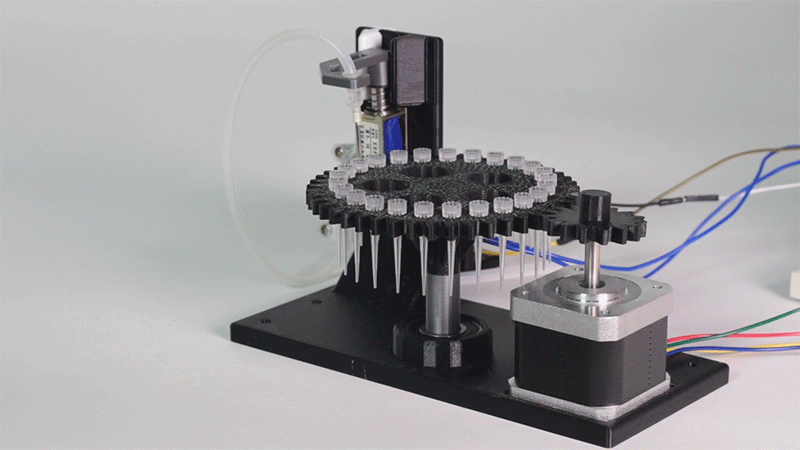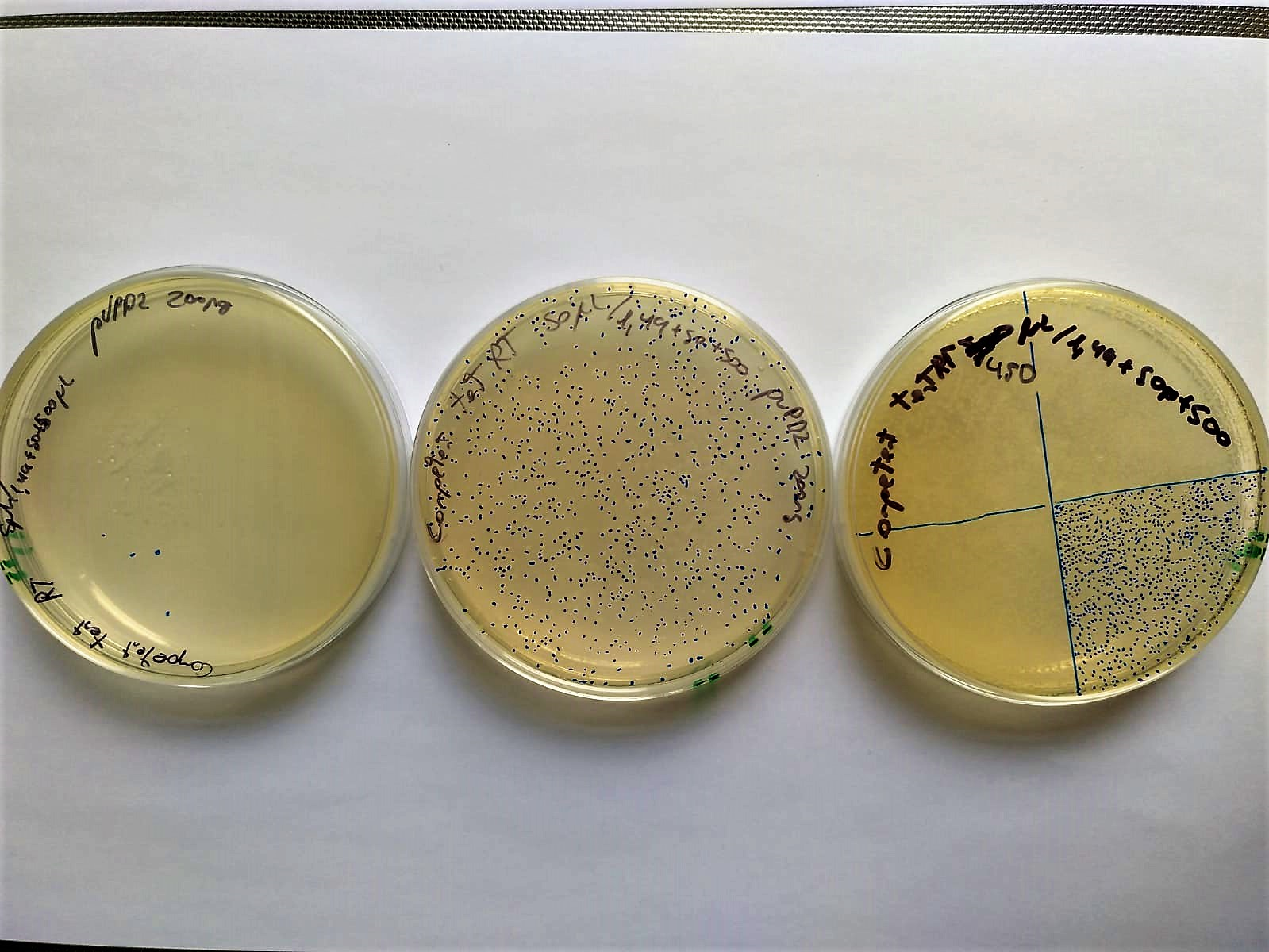Demonstrate
After long months of effort and dedication, the Printeria project of the Valencia UPV iGEM 2018 team is now a reality! All our work has been reflected in our Printeria device. With this project we intend to make the approach to Synthetic Biology a reality, but... to what extent has our team been able to develop Printeria? Does it really work? Let's see all the evidences of our achievements...
Printeria device concept-testing
Here we show you all the evidence to convince you that the Printeria device really works...
The input system is a completely original approach in order to dispense precise quantities of liquid in a compact and highly controllable way. You can check in this video how our device input system works...
The digital MicroFluidics is at the centre of Printeria, and it enables a high control of the reactions. We have accomplished the movement on the droplets in smaller test boards, as you can see here:
And then we moved to a more clean product that is able to hold a larger number of pads and it is easier to control. You can see that result below:
VIDEOS
The droplet needs to be heated and cooled for the reaction to take place. We have implemented these hot and cold zones via a resistor and two peltiers. Here the stability of the temperature control for both is demonstrated.
GRÁFICA
We have included the design of out electroporator from Hype It iGEM project, developed in 2016 by Valencia UPV team. The results of our experiment using it are shown here:
GRÁFICA
For the output we have included an Optical Density and Fluorescence sensors in order to measure data from the bacteria that are growing on the measurement zone. The results of our tests are the following:

OD measurements registred by Printeria OD sensor adn fitted to an exponential curve of cell growth.
GRAFICA FLUORESCENCIA

Proof of concept of the input system.
Printeria Wet Lab demonstrations
In this section you can check all our Wet Lab demonstrations...
We have proved that assembling functional composite parts with the Golden Gate method with our basic parts is possible... Here you can see a sfGFP transcriptional unit that has been obtained by employing Golden Gate assembly method.
It has also been proven that by using linearized destination vectors in the Golden Gate assembly reactions, a very small number of bacteria transformed with vectors without the desired insert are obtained. Here you can see a GFP transcriptional unit obtained by using a linearized destination vector in the assembly reaction.
Another demonstration is that electrocompetent bacteria can be stored at -20ºC for at least two weeks and chilled for 4 hours at room temperature (30.3ºC) without losing their competence.

Serial decimal dilutions (from left to right: 10-2, 10-1 and 100) of transformed electrocompetent bacteria stored at -20°C for two weeks and set at Room Temperature (37°C) 4 hours before electroporation. These bacteria are transformed with P10500 and plated in LB-agar petri dishes with cloranphenicol.
Finally, to compare the efficiency of Golden Gate vs BioBricks assembly, we have designed a comparative experiment between two TU of identical structure but assembled with Golden Gate and BioBricks method, respectively. Our results demonstrate that both methods have the same efficiency.

Comparison between fluorescence and absorbance of Golden Gate and BioBrick TU.



